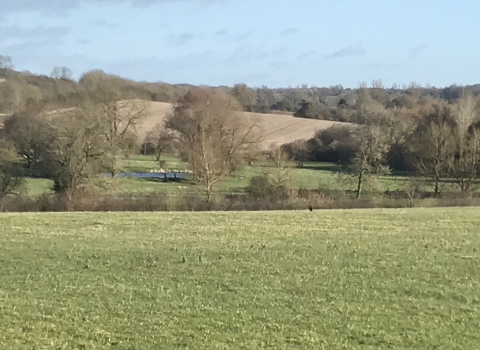
Credit Peter Bowman
Severn Trent Agricultural Adviser Project
Over 70% of Warwickshire is agricultural land, therefore in order to achieve Living Landscapes we must work collaboratively with farmers and land managers to make space for nature. Warwickshire Wildlife Trust has recently joined forces with Severn Trent to help tackle diffuse water pollution. We are working with farmers in targeted river catchments across Warwickshire to support and encourage the good work that is already being done to reduce the amount of harmful nutrients, pesticides and sediment entering our precious rivers.
What's the problem?
Diffuse water pollution is a term used to describe pollution that comes from different sources across a river catchment that often cannot be traced to a single point.
Diffuse water pollution is the single largest agricultural contribution to the failure of water bodies to achieve good ecological status under the EU Water Framework Directive.
According to DEFRA, farming accounts for 25% of phosphate, 50% of nitrate and 75% of sediment loadings in the water environment.
Diffuse water pollution has no single point of origin in the landscape therefore poses a significant policy and management challenge.
How can we manage diffuse water pollution?
Manage it at the source
-
Think about what is put on the land and when, how fields are cultivated and what is grown.
Manage how pollution moves through the environment
-
Think about the timing of applications of nutrients and pesticides to ensure that these essential and costly resources are doing the best for crops and are not wasted by being washed or blown away.
Manage the pathways across the landscape
-
Think about how machinery is moved across fields to reduce compaction, consider moving gateways to reduce erosion hot spots.
Protect the receptors
-
Drains, rivers, pools and groundwater are vulnerable to pollution, cleaning and filtering water before it reaches these receptors is the best way to protect our vital water resources.
The Warwickshire Wildlife Trust and Severn Trent partnership approach
- To promote resource protection and land management practices to reduce diffuse water pollution from agriculture in the River Leam and Upper Avon river catchments, focusing on pesticides, particularly metaldehyde;
- To raise awareness, improve understanding and acceptance amongst farmers and land managers of diffuse water pollution from agriculture and its impact on drinking water quality and the wider water environment within the River Leam and Upper Avon river catchments;
- To engage with farmers in targeted areas identified through the catchment appraisal through a voluntary approach, and create a sense of ownership and achievement within the farming community;
- To support farmers and land managers in making changes to management practices to mitigate diffuse pollution. Over the duration of the project farmers who have had visits or advice, will have taken action to make a contribution to mitigating contributions from their farms; and
- To demonstrate the catchment management approach to improving water quality and thus conserving and the wider water environment to external partners.
The map below shows the Upper Avon river catchment in purple and the Leam river catchment in red, which are the target areas for this project.
If you are a farmer or landowner within the Leam or Avon catchments and would like to speak to our Agricultural Advisor please contact peter.bowman@wkwt.org.uk.


Funded by Severn Trent
